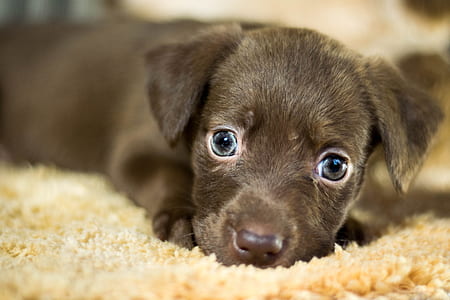
You are searching for a Labrador retriever puppy. Every dog breed has a history and you are welcome to know about Labrador. This is a breed of retriever gun dog that was originated from imported Canadian fishing dogs. It is one of the most popular dog breeds in several countries around the globe. It is considered a friendly companion and a useful working puppy. The lab is considered America’s most popular breed and it is hardworking like its ancestors.
Characteristics:
Contents
They are best known for their loyalty, obedience, and playful composure. Additionally, they are known as hunting or sporting dogs. There are a variety of lab dogs that are in the U.S and the U.K.
Size:
They are a medium-large breed. The male dog breed should be 56 to 57 centimeters while the female 55 to 56 centimeters.
Coat:
Their coat is short and dense, not wiry. Its coat is water-resistant, so it does not get cold while going to water in the winter season.
Head:
The Head is long with broad eyebrows. If you notice their eyes are expressive and kind. Their body is muscular and strong.
Are Labrador family dogs?
The Labrador retriever puppies have a sweet nature that makes them an excellent therapy dog. They are ideal for helping dogs for those having disabilities. They are of athletic build, courageous in nature, and strong nose which helps in the search.
Labrador retriever puppies History:
These dogs spend their days working alongside the owners and comes back home to spent time with a fisherman’s family. They hail from the island of Newfoundland, near the northeastern Atlantic coast of Canada. Fishermen owned these canine companions and, they jumped into the water to bring back the fish.
The canine continued to live in Newfoundland only until the mid-1800’s when it was introduced to Poole, England. The Earl of Malmesbury had seen a variety in real life and quickly returned home.
Nutrition:
The Labrador retriever puppies can do well on high-quality dog food, it may be homemade food or your veterinarian suggested food items. Some canine companions are prone to getting overweight, so, watch your dogs’ calorie consumption deeply. You must learn, which human foods are safe for dogs?
Grooming:
They need special assistance to groom. You must keep them active and play with them. The Lab puppies’ teeth need to be brushed regularly and nails should be trimmed. Keep them clean with occasional baths. If you give attention and keep them clean then they live a healthy life.
Exercise:
The Labrador Retriever is an overflowing, vigorous variety that needs heaps of activity consistently. A Lab that doesn’t get enough exercise is likely to engage in hyperactive or destructive behavior to release pent-up energy. This breed’s favorite activities are swimming and retrieving. Many Labs puppies also work hard in important roles such as search and rescue.
Training:
With the dogs’ actual strength and high energy level little dogs instructional training and socialization is required. Tenderly presenting the little dog to a wide assortment of individuals, spots, and circumstances between the ages of 6 weeks and 5 months and starting compliance preparing right off the bat will assist him with building up a composed, polite grown-up.
Little dog instructional courses fill in as a component of the socialization cycle and assist the proprietor with learning to perceive and right any unfortunate propensities that might be creating. Labs are dedicated, shrewd, and energetic sidekicks who should be remembered for family exercises.
Health:
Labs are sound canines generally, and a mindful raiser screens rearing stock for conditions, for example, elbow and hip dysplasia, heart issues, genetic myopathy (muscle shortcoming), and eye conditions, including reformist retinal decay. A condition called practice initiated breakdown (EIC) can happen in some youthful grown-up Labs; a DNA test permits reproducers to recognize transporters and plan to breed to try not to create the illness.
Like other enormous, profound chested canines, Labs can build up a hazardous stomach condition called swell. Proprietors ought to teach themselves about the manifestations that show this is happening, and what to do assuming this is the case.
Conclusion:
Young doggies develop into grown-ups at an alternate time, which implies that a huge canine variety will develop into a grown-up at around 15 months, while more modest varieties will be pups for just 9 months. Along these lines, you’ll need to take care of a bigger canine variety exceptionally figured dog nourishment for any longer than you would a more modest canine variety.
The Labrador Retriever is the conventional water dog of Newfoundland since quite a while ago utilized as a duck retriever and angler’s mate. The variety started its consistent move to incomparable fame in the mid-1800s when Labs were spotted by English aristocrats visiting Canada.
These brandishing dukes and masters got back to England with fine examples of “Labrador canines.” (Exactly how these canines of Newfoundland got related with Labrador is muddled, however, the name stuck.) During the last 50% of the nineteenth century, British reproducers refined and normalized the variety.